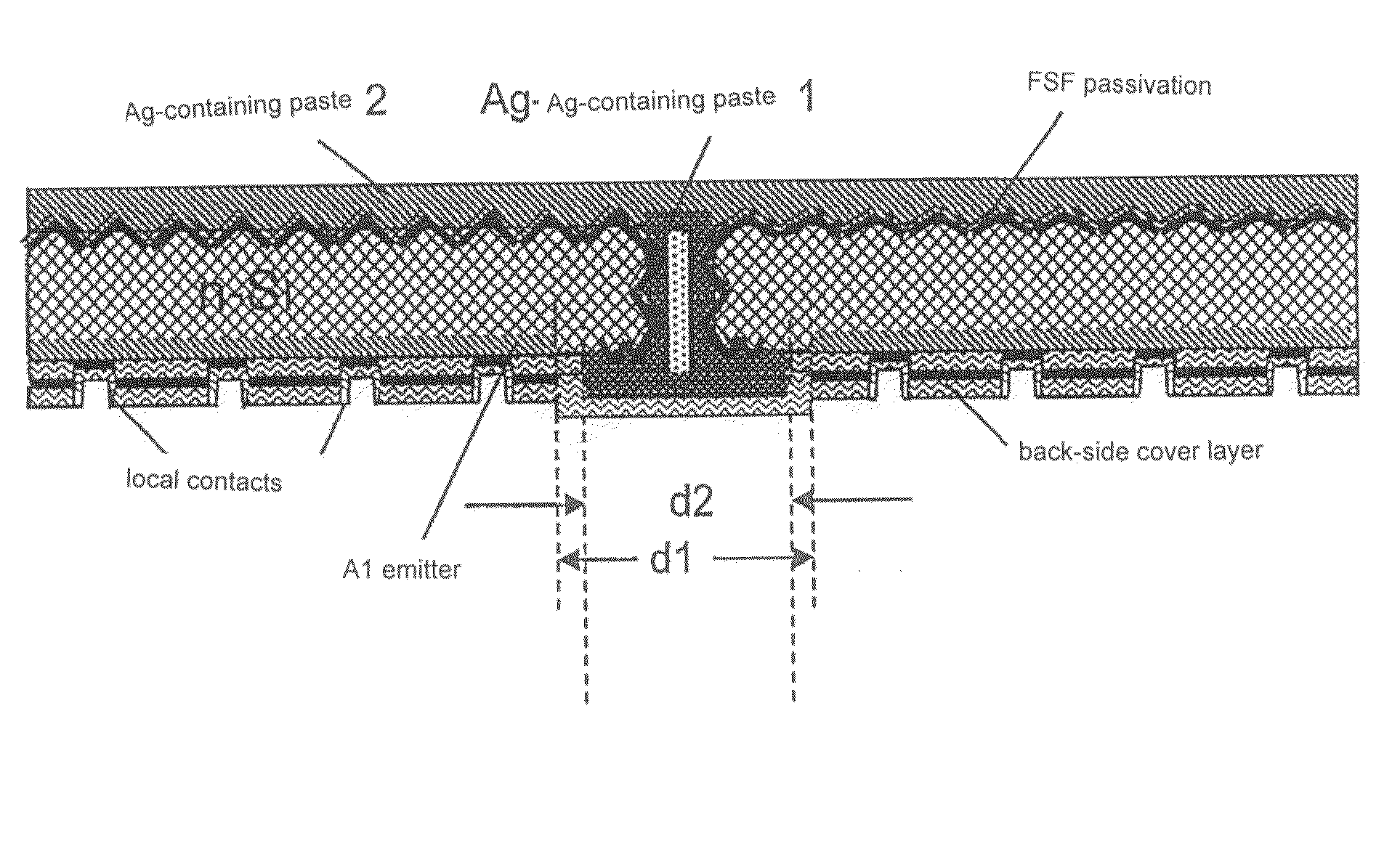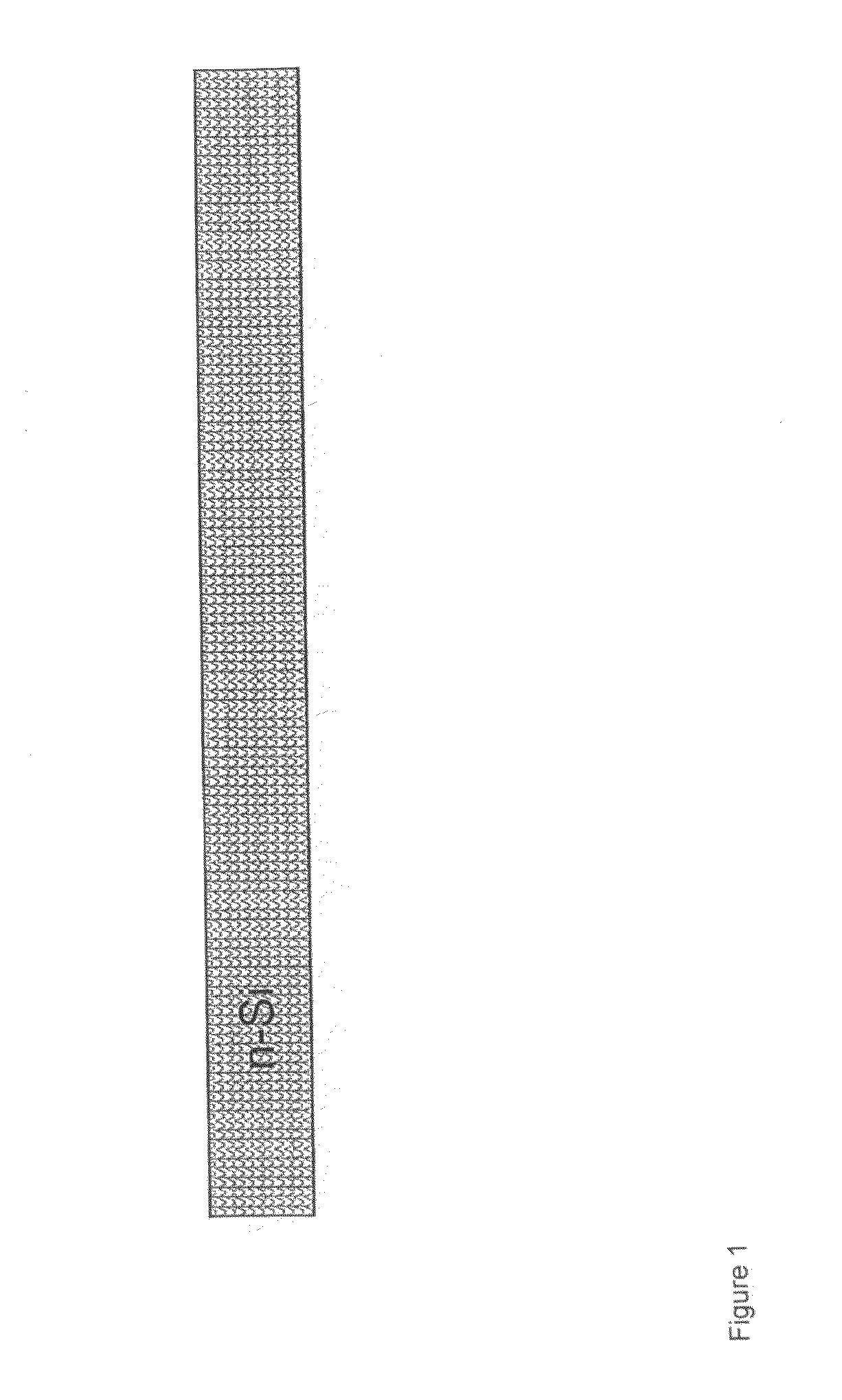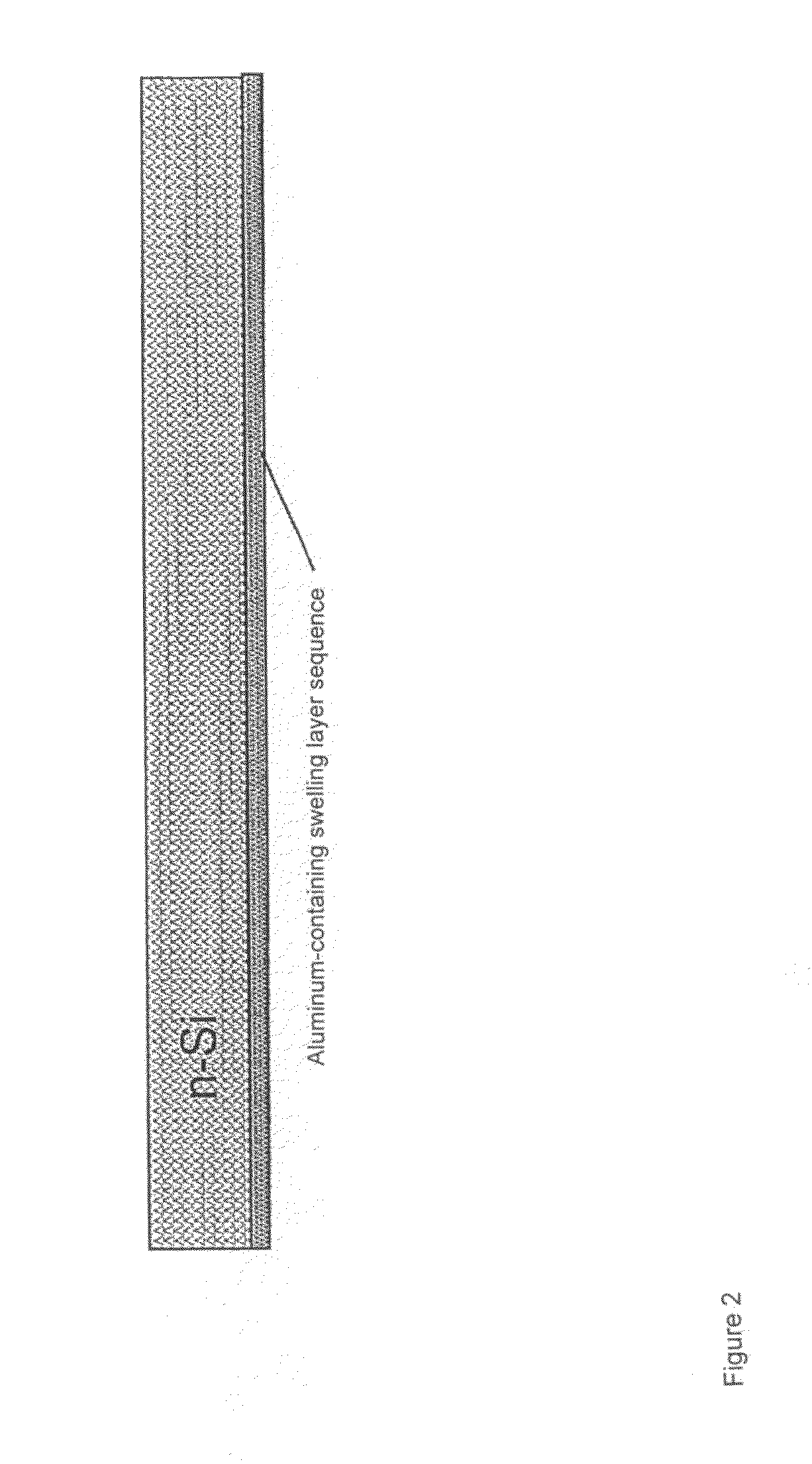Solar cell and method for manufacturing same
a solar cell and solar cell technology, applied in the field of solar cells, can solve the problems of difficult to insulate the emitter doping in the region of the provided back-side emitter busbar with respect to the adjacent back-side doping (bsf), and achieve the effect of reliable manufacturing and high yield
- Summary
- Abstract
- Description
- Claims
- Application Information
AI Technical Summary
Benefits of technology
Problems solved by technology
Method used
Image
Examples
Embodiment Construction
[0026]FIGS. 1 through 21 show schematic detail illustrations of one example embodiment of the solar cell and the manufacturing method according to the present invention, in cross sections or bottom views (top views of the second main surface). Due to the illustrated coating sequence, the individual figures for the most part are self-explanatory; therefore, the following description is provided merely in outline form and is understood to be a supplement to the figures.
[0027]In particular, the measures known from the related art for providing selective doping beneath the silver fingers on the front side have not been included in the description, without ruling out that these measures may be used in the cell according to the present invention in order to improve the blue light sensitivity on the front side.
[0028]Starting with a roughly purified n-silicon wafer, the following process steps (as an example) result in one preferred specific embodiment of the described cell concept.
[0029]1)...
PUM
 Login to View More
Login to View More Abstract
Description
Claims
Application Information
 Login to View More
Login to View More - R&D
- Intellectual Property
- Life Sciences
- Materials
- Tech Scout
- Unparalleled Data Quality
- Higher Quality Content
- 60% Fewer Hallucinations
Browse by: Latest US Patents, China's latest patents, Technical Efficacy Thesaurus, Application Domain, Technology Topic, Popular Technical Reports.
© 2025 PatSnap. All rights reserved.Legal|Privacy policy|Modern Slavery Act Transparency Statement|Sitemap|About US| Contact US: help@patsnap.com



